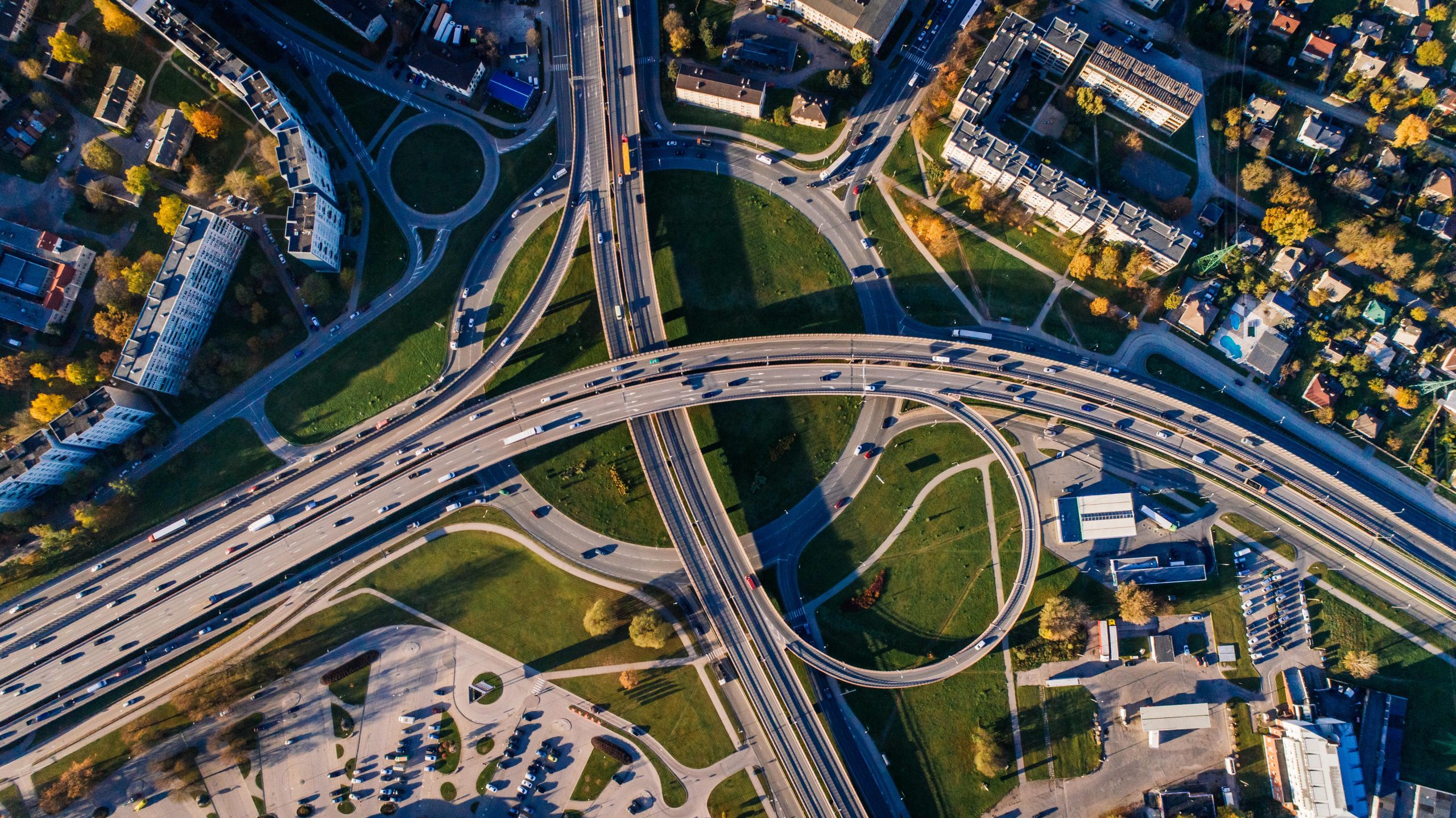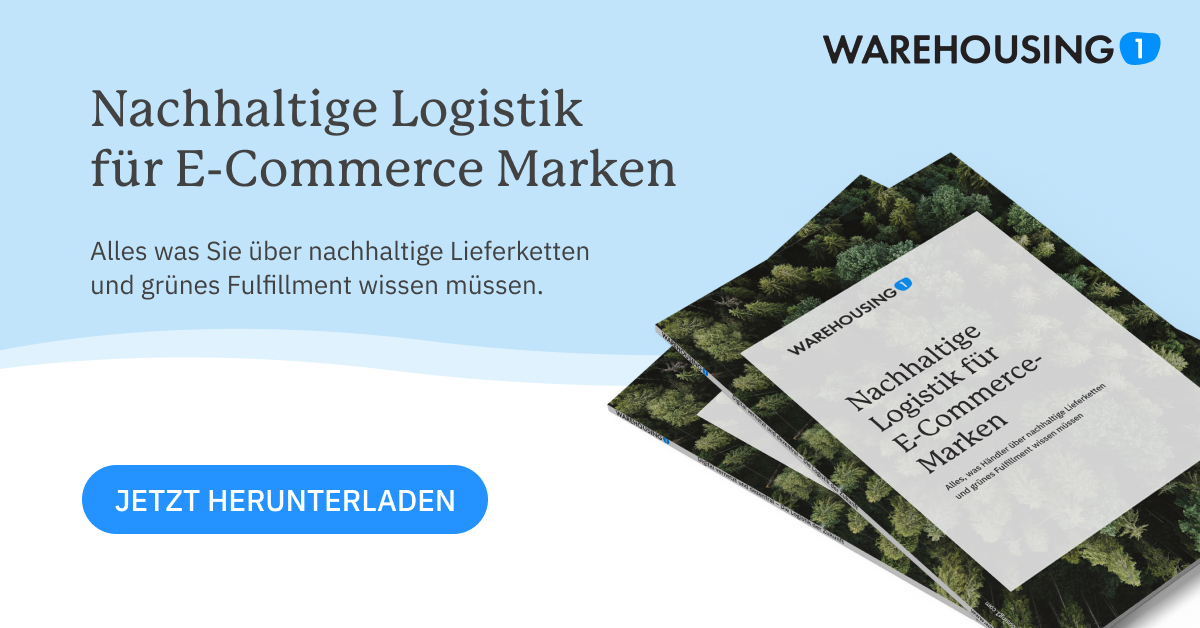Summer vacation is coming soon and with it, many will spend several hours stuck in traffic on the highway with family and friends. On the right lane, one huge truck follows the next. In them are the goods we need for our daily needs and much more. Most drivers in a traffic jam would be amazed with this statistic: for 40 percent of trips the trucks are empty. In a world where end-customers and brands want more sustainable retail with sustainable supply chains, this is hard to gloss over. Because every empty trip, of course, means unnecessarily emitted emissions. An important piece of the puzzle on the way to a sustainable supply chain is the so-called route optimization. This article is about optimized routing and the much-discussed emission of CO2. We explain what route optimization is all about, what benefits it brings, and what steps brands can take to reduce emissions and communicate their efforts.
Table of contents:
1. Supply chain inefficiency
2. Digital, connected, efficient: The sustainable supply chain of the future
3.What can brands do for more sustainable supply chains?
4.Find and name hidden emissions
5.A first step: Climate-neutral supply chains for your brand
Supply chain inefficiency
An empty truck causes unnecessary emission of CO2 and particulate matter, and consumes resources; it costs money and takes up space on the road. So why do so many trucks drive empty? There are many reasons for this. The main one is a fundamental problem of logistics. Production locations and the places where the goods reach the consumer are often not the same. This results in an imbalance that is difficult to manage. For example, logistics companies transport significantly more goods from the main manufacturing countries in Southeast Asia to Europe than the other way around. Accordingly, the utilization of the means of transport from Europe to Asia is significantly worse. But we don't have to think globally to find inefficiency. Even in Germany or Europe, production and consumption often do not take place in the same place. Cities consume more than they can produce. This makes it more complicated to organize supply chains sustainably.
A simple example of a more efficient delivery scheme is beverage logistics. A beverage brand delivers many cases of beverages by truck to a hotel. On the way back, however, the vehicle does not drive without a load, but transports empty bottles back to the production site or to a recycling station. But because it is unfortunately not always that simple, many trips and delivery routes are poorly utilized or not utilized at all on at least one route.
Route optimization has two manifestations. On the one hand, systems or human planners find the shortest routes and thus avoid costs for gasoline and working time. On the other hand, route optimization also means better utilization of truck capacity and thus lower CO2 emissions.
Digital, connected, efficient: The sustainable supply chain of the future
40 percent empty runs show that there is incredible potential for increasing efficiency and sustainability in logistics. Digital solutions in particular can make a big difference here. AI-driven software can be used, for example, to identify patterns and potential savings in supply chains. Computers help to design routes in such a way that transport capacities are utilized as well as possible. A nice side benefit is that these digital tools also make supply chains more resilient, flexible, and reduce the risk of disruptive factors.
A logistics provider or a brand alone can only make this much of a difference here. It is important that various players are connected via platforms and thus benefit from synergies. In this way, trucks are less likely to drive empty because the next available load can always be found via the network, which leads to better capacity utilization and more sustainable supply chains.
What can brands do for more sustainable supply chains?
E-commerce brands rarely take care of the entire supply chain themselves. So how can they help do something about more sustainable transportation? It all starts with choosing the right service providers. There are many logistics companies that have a network of partners, similar to what Warehousing1 offers for warehouse logistics, and can thus cover a larger number of customer projects as effectively as possible. The logistics startups Forto – for freight forwarding – and Sennder – for trucking – are good examples of this.
Brands can also make sure to choose partners that actively offer sustainable services or transparently communicate their environmental footprint. This helps brands better assess their own impact on the planet and, if necessary, consider changes in Sourcing .
Find and name hidden emissions
The emissions generated by the daily business of brands are manifold. The CO₂ emissions from trucks and ships for transportation are still the most obvious part. But there are many other factors to consider. Climate researchers and economists divide emissions into three categories (or Scopes).
Scope 1: Direct emissions
The first category revolves around a company's direct emissions. This includes, for example, the CO₂ emitted by a company's vehicle fleet. If brands produce their own products, the resulting emissions are also included in Scope 1.
Scope 2: Indirect emissions
The second category of emissions are indirect emissions. These include, for example, the energy supply of the company building, which causes emissions when it is generated. Although these are indirect, they can be influenced quite easily by brands – for example, by switching to a sustainable energy supplier or, in the case of large companies, installing a photovoltaic system on the company premises. Therefore, both Scope 1 and Scope 2 are emissions that are within the company's direct sphere of influence.
Scope 3: Upstream and downstream indirect emissions
The last category is an important and comprehensive one. It is all emissions that are not within the direct sphere of influence of the company. And this includes emissions that occur during transportation. But the list of Scope 3 emissions is long and includes, among other things, purchased goods and services, proportional fuel and energy consumption by upstream companies, waste produced and its disposal, further processing of the product, and even the use of the product by the end consumer.
A first step: Climate-neutral supply chains for your brand
It can be very time-consuming to find out all the emissions that occur in the various areas of a company. It's not for nothing that there are separate service providers and entire departments in corporations that record all emissions and work on making companies more sustainable. Nevertheless, it can be worthwhile, especially for young brands, to complete this task. This is because it allows e-commerce brands to take action early on to tackle their own emissions and resource consumption. Especially if your target group includes adults under 40, sustainability remains a core aspect for your customers' purchasing decisions.
Accordingly, you should communicate your sustainability efforts honestly and transparently to your customers. Companies often use terms such as climate neutral, net zero or zero emissions. These three terms describe different strengths of the commitment to reduce emissions. Climate neutral means that the company offsets all emissions it produces, for example through reforestation projects.Brands can call their business Net Zero if they offset all emissions generated and also reduce their own CO₂ emissions at the same time. Zero emissions, on the other hand, means that the business produces no emissions at all. With today's technology, this is not yet realistic for companies. A net zero approach, in which emissions are reduced and offset, is a solution that can already be implemented today by environmentally conscious brands that also want to position themselves towards their customers as such.
If you would like to make your warehousing activities more sustainable, please contact us. In our Warehousing1 network we can find logistics locations, near you or near your customers. We also have green logistics providers who can help you reduce your Scope 3 emissions. We look forward to your inquiry!




